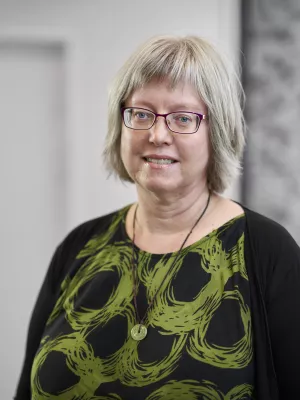
Marina Svensson
Professor

The Evolving Heritagescape: Actors and Narratives in Xinye village
Author
Summary, in English
scholars and heritage experts. Today many individual buildings and whole villages
have been listed as protected sites at different levels. But long before experts began to
take an interest, villagers were themselves actively involved in protecting their own
traditions and the buildings of importance to the community (in particular ancestral
halls and temples). The new heritage discourse and policy have brought new actors
into the cultural life of villages, and other ways of managing and narrating the
heritage. The local heritage is therefore no longer just a concern of locals but also of
experts and outsiders such as tourists.
The author has since 2003 regularly visited Xinye village in Zhejiang, and thus been
able to closely follow how the heritage discourse and policy have influenced the life
and makeup of the village. The paper throws light on the views and experiences of
villagers in this new heritagescape. Whereas older people continue to be active in the
lineage to document family and village history in genealogies, younger people today
also use other means, including the Internet and social media, to document and
celebrate their history. But a range of other actors, including heritage experts and
heritage bureaus and tourism companies, are today making their mark on how the
local heritage is preserved and narrated. The paper addresses this development and the
impact of new actors on how the village’s heritage is narrated, visualised and
experienced. During my latest visit in 2015 I discovered some surprising changes in
the village. The popular programme Baba qu na’r (爸爸去那儿), an original South
Korean TV show adapted by Hunan TV, had recently been recorded in the village
with several famous artists and superstar Yao Ming. This very recent ‘history’ had
been added to the old ‘history’ of the village and attracted many new visitors, which
shows how the cultural heritage is constantly being constructed, mediated, and repackaged
in sometimes surprising ways.
The paper aims to unpack the way heritage in a small village has been re-imagined
and negotiated under the impact of socio-political and economic changes, and the
different actors involved in this process and their divergent ability to have an impact. I
pay particular attention to issues of agency and power among different actors, and the
way the heritage is mediated and visualised on different platforms (including on the
Internet and on TV).
Department/s
- Centre for East and South-East Asian Studies, Lund University
Publishing year
2016
Language
English
Document type
Conference paper: abstract
Topic
- Humanities
- Social Sciences Interdisciplinary
Keywords
- Cultural heritage
- China
- Asian studies
Conference name
Reclaiming Identity and (Re)Materialising Past Approaches to Heritage Conservation in China
Conference date
2016-04-06 - 2016-04-08
Conference place
Suzhou, China
Status
Published
Project
- Kulturarv och bevarandefrågor i Kina

